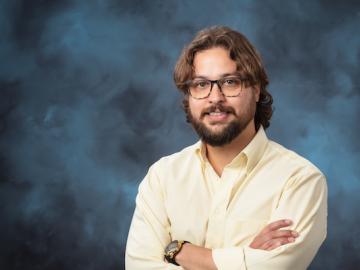
Filter News
Area of Research
- (-) National Security (15)
- Advanced Manufacturing (1)
- Biological Systems (1)
- Biology and Environment (28)
- Computational Biology (1)
- Computational Engineering (1)
- Electricity and Smart Grid (1)
- Energy Science (46)
- Fuel Cycle Science and Technology (1)
- Fusion and Fission (27)
- Fusion Energy (5)
- Isotope Development and Production (1)
- Isotopes (8)
- Materials (59)
- Materials for Computing (5)
- Neutron Science (23)
- Nuclear Science and Technology (25)
- Supercomputing (60)
News Topics
- (-) Biomedical (2)
- (-) Exascale Computing (1)
- (-) Frontier (1)
- (-) Grid (4)
- (-) Nuclear Energy (4)
- (-) Partnerships (5)
- (-) Physics (1)
- 3-D Printing/Advanced Manufacturing (2)
- Advanced Reactors (1)
- Artificial Intelligence (12)
- Big Data (4)
- Bioenergy (3)
- Biology (5)
- Biotechnology (1)
- Buildings (1)
- Chemical Sciences (2)
- Computer Science (17)
- Coronavirus (1)
- Cybersecurity (17)
- Energy Storage (1)
- Environment (4)
- Fusion (1)
- High-Performance Computing (4)
- Machine Learning (12)
- Materials (2)
- Materials Science (3)
- Nanotechnology (1)
- National Security (34)
- Neutron Science (4)
- Quantum Science (1)
- Security (10)
- Simulation (1)
- Summit (1)
- Transportation (1)
Media Contacts

In human security research, Thomaz Carvalhaes says, there are typically two perspectives: technocentric and human centric. Rather than pick just one for his work, Carvalhaes uses data from both perspectives to understand how technology impacts the lives of people.

ORNL scientists will present new technologies available for licensing during the annual Technology Innovation Showcase. The event is 9 a.m. to 3 p.m. Thursday, June 16, at the Manufacturing Demonstration Facility at ORNL’s Hardin Valley campus.

A team of researchers has developed a novel, machine learning–based technique to explore and identify relationships among medical concepts using electronic health record data across multiple healthcare providers.

Unequal access to modern infrastructure is a feature of growing cities, according to a study published this week in the Proceedings of the National Academy of Sciences

Scientists at the Department of Energy’s Oak Ridge National Laboratory are working to understand both the complex nature of uranium and the various oxide forms it can take during processing steps that might occur throughout the nuclear fuel cycle.


